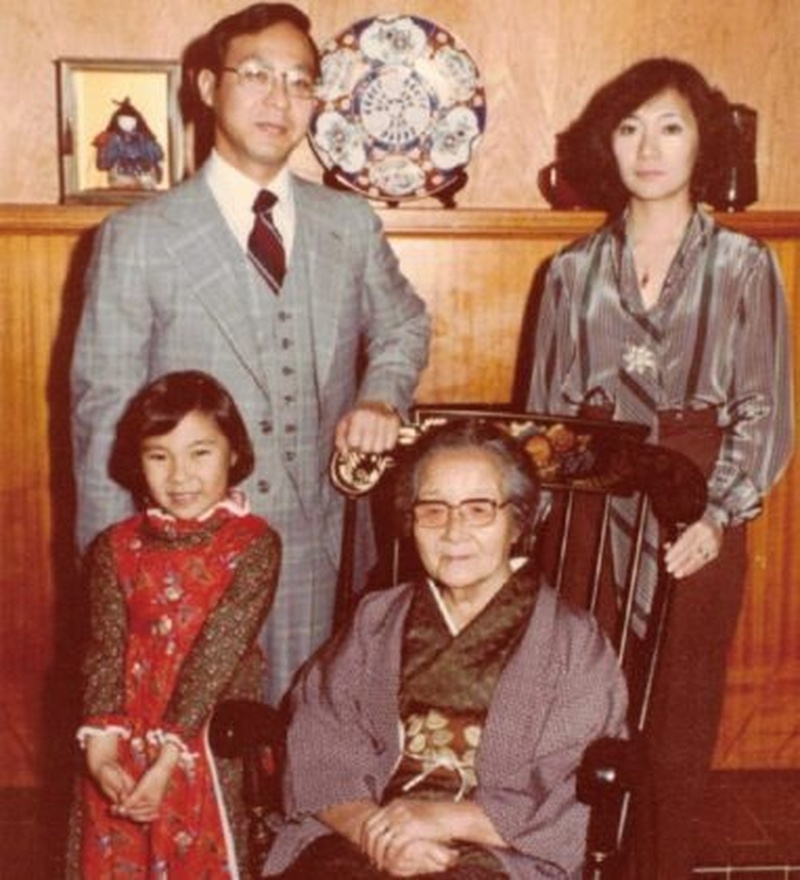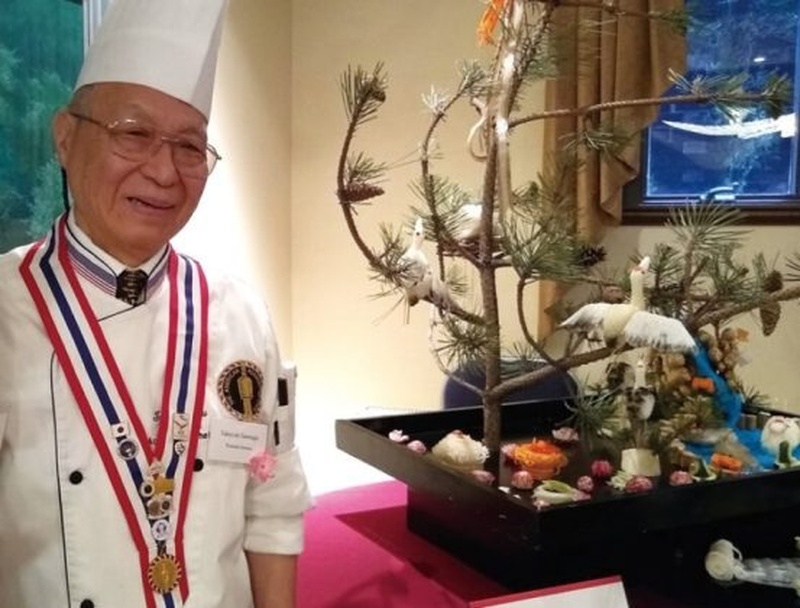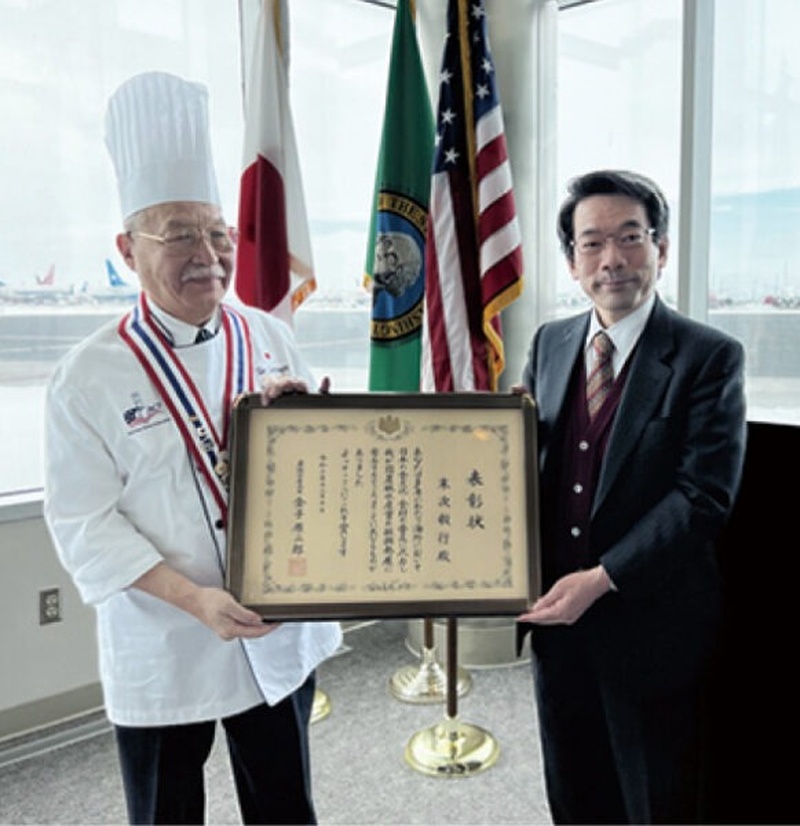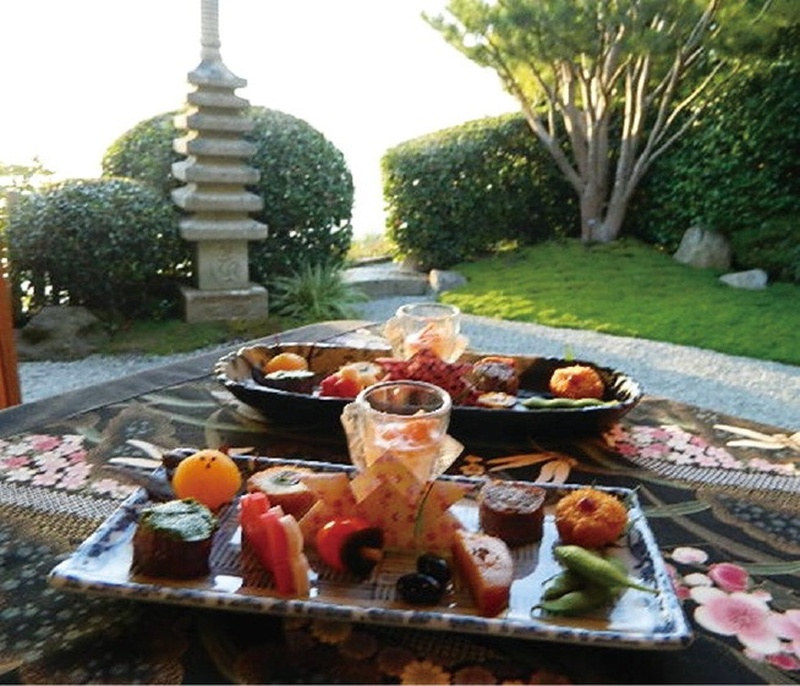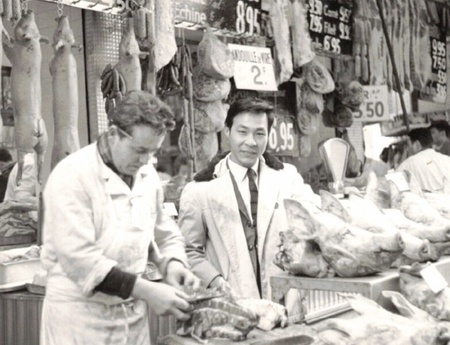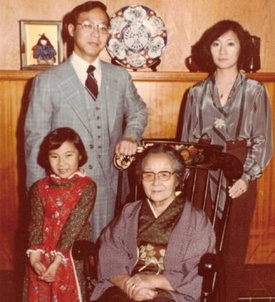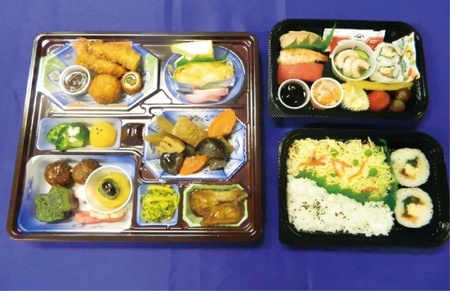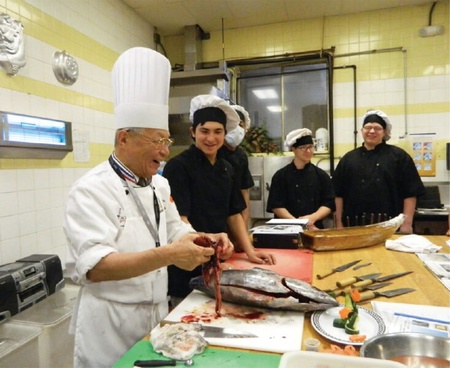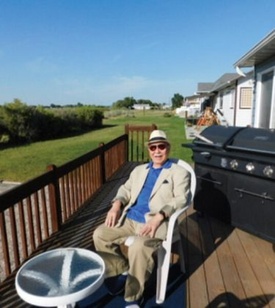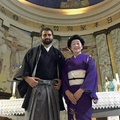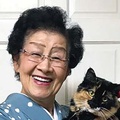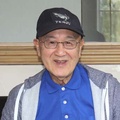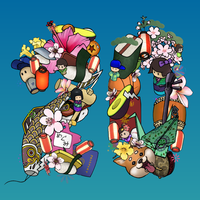The celebrated chef Takeyuki Suetsugu recently spoke with former North American Post Editor Akiko Kusunose about his half century spreading the good word about Japanese cuisine in the United States. Over those 50 years, he’s received many accolades for his work, including a commendation from the Consul General in Seattle in 2009, a Japanese Cuisine Goodwill Ambassador Commendation from the Ministry of Agriculture, Forestry and Fisheries in 2016, and the 15th Japanese Food Overseas Dissemination Achievement Award from the same ministry in 2021. Last spring, he received the highest honor yet: the Order of the Rising Sun, Gold and Silver Rays, from the government of Japan.
* * * * *
“So far, I have demonstrated and taught Japanese cooking at every college in Washington state,” Chef Suetsugu says as he reflects on a half century of cooking and teaching in the US. He takes pride in the fact that he has taught Americans face to face through lessons and cooking demonstrations, while back home in Japan, apprentice chefs have to peer over the shoulder of their teachers and learn from the masters by memory.
Chef Suetsugu was born the youngest of seven children on the southern tip of the Satsuma Peninsula in Kagoshima Prefecture. His parents ran a miso and soy-sauce brewing business there, but when Suetsugu was in high school, the business fell on hard times.
He moved to Tokyo for high school and excelled at judo. His original plan was to continue his focus on judo at the university level, but while browsing through a magazine in the school library, he came across an article about Rocky Aoki, the founder of Benihana.
The teenage Suetsugu had a new plan: leave judo behind and become a chef. Once he had the skills, he planned to move to the US.
“Looking back, when I was in the second grade, my homeroom teacher told me that even dishwashers and janitors had their own cars in the US,” he recalls. “That surprised me and made me really want to go.”
His training as a chef began at a long-established hotel called Taikanso in Atami where his uncle was the general manager. Eventually, he moved to Osaka, where he worked for nearly three years.
But Suetsugu was young and impatient. He began to wonder when he’d be able to move to the U.S. That’s when he heard that every year, one student from Tsuji Culinary School is sent abroad. He enrolled and began a rigorous life where he worked at night and went to school during the day. The tuition was expensive, but he says it was worth it. Plus, his workplace was very understanding.
The Tsuji Culinary Institute in Osaka was opened just four years earlier, in 1960, by Shizuo Tsuji, a former newspaper reporter with a deep knowledge of French cuisine. Suetsugu’s experience at the school as well as his interactions with Principal Tsuji had a great impact on his life as a chef. When he enrolled, the school had about 250 students. When his studies drew to a close, a school recommendation helped him get a job offer in Denver. His dream of going to the U.S. was becoming a reality.
But the U.S. government had other ideas. “They wouldn’t give me a visa,” he recalls. “They said I didn’t have enough experience.”
Disappointed, he eventually received an offer from the school to go to Paris to work in a new Japanese restaurant. The year was 1966.
A year and a half later, he returned to Japan by ship through the Suez Canal, departing from Marseille. It took him 40 days to get home, with stops in Egypt, India, and Hong Kong.
Upon his return, he found that the restaurant in Denver was trying again to recruit a graduate of Tsuji. This time, he qualified for a visa. At the end of 1967, Suetsugu arrived in Denver with his kitchen knife and $135 in cash.
It turns out that the Denver restaurant owner’s niece, Minae, was also leaving Japan to study in Denver. She and Takeyuki would eventually get married.
He was under contract with the Denver restaurant for three years, but after settling into U.S. life, he grew increasingly curious about the Japanese culinary scene in other parts of the U.S.
After a year and a half, he bought a Chevrolet Impala for $4,750 and drove to Chicago, New York, and Washington DC to give cooking demonstrations and lectures on Japanese cuisine. In DC, he took a job at a Japanese restaurant.
Meanwhile, his long-distance courtship of Minae continued. He’d talk on the phone with her every weekend for an hour, cutting back on food so he could afford the phone calls.
After his cross country trip, he took a six-month job in Seattle at the Mikado restaurant. On the drive from Denver to Seattle, Minae and Takeyuki got married in Las Vegas. When they arrived in Seattle, Henry Takemitsu Kubota, then publisher of the North American Post, and Sadako Moriguchi (wife of Uwajimaya founder Fujimatsu Moriguchi) through the couple a proper wedding reception. Minae was related to the Moriguchis.
The couple moved to California, Denver, and eventually back to Seattle in 1972. By that time, they had a daughter, Eriko.
In 1976, Suetsugu opened Satsuma Restaurant in Burien. He opened a branch of that restaurant in Denver and a 200-seat restaurant 10 years later.
Later, Suetsugu co-owned Nikko (1997-2002), a large Japanese restaurant in the Westin Seattle hotel. He then opened Bistro Satsuma (2002-2016) in Gig Harbor. He was also contracted to provide in-flight meals for Northwest Airlines and United Airlines. He served as a Japanese food consultant for American Airlines.
Chef Suetsugu’s career is really a series of bold moves. One of the boldest was his move in 2016 to Moses Lake, where he opened Washoku Satsuma, which focuses on bento boxes and catering.
Moses Lake had become a test-flight site for the Mitsubishi Regional Jet, a small passenger jet developed by Mitsubishi Heavy Industries.
His initial role was to provide Japanese food to the 200 or so Japanese employees near the site. But now that the test flights have ended, he continues to teach at a local vocational training school.
Chef Tak, as he is known to his many students in Washington state, has a passion for culinary education and demonstrations. He’s been traveling around the state since 1984 under the Satsuma Cooking School banner, putting on demos and teaching at community colleges and vocational training schools. His mission, he says, is to “evangelize Japanese food.”
Chef Tak, whose motto is “Food behind culture,” takes interest in his students even after they graduate, encouraging them to apply for apprenticeships in Japan and sharing their disappointment on occasions when they don’t get the job. His students study hard, he says, and during their year of study, he tries to instill in them the joy of washoku and the limitless possibilities for them. “I say to my students. I came to the U.S. on a one-way ticket with only $135, and I was able to do all of this.”
It has been 56 years since Chef Tak came to the U.S. He turns 80 this year.
“Actually, I have a quick temper and am quarrelsome,” he confesses. “Because of this, I made some mistakes when I was young. But many people have helped me get this far.”
Over mountains and valleys, crisscrossing the U.S., Chef Tak and his beloved Minae have been spreading the good word of washoku for more than a half century. He continues his work today in Moses Lake.
*This article was originally published in The North American Post on January 14, 2024.
© 2024 Akiko Kusunose



